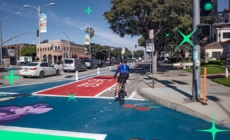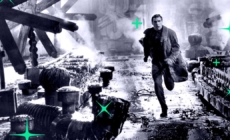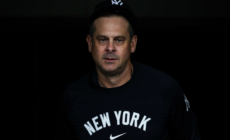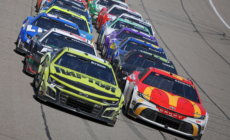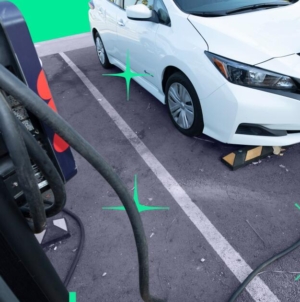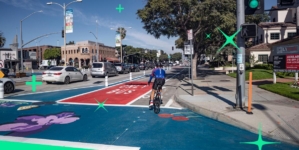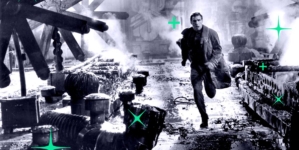-
Commentary: The state sets lofty goals in the name of a brighter future. What’s a vision and what’s a hallucination? - 29 mins ago
-
NFL Preseason Betting Odds, Picks For Dolphins-Bears, Saints-Chargers - 36 mins ago
-
Which 10 Players Have The Most Single-Game Rushing Yards in FBS History? - 45 mins ago
-
How might you reconfigure L.A. so it’s a sustainable home for everyone? - about 1 hour ago
-
DraftKings Promo Code: Get $200 Bonus For Sunday MLB, NFL Preseason Games - about 1 hour ago
-
Jaguars’ Cam Little Makes Unofficial NFL Record 70-Yard Field Goal vs. Steelers - about 1 hour ago
-
Hollywood takes a wrecking ball to Los Angeles - 2 hours ago
-
Mets Legend Named Option for Yankees to Replace Aaron Boone - 2 hours ago
-
Netanyahu says starvation claims in Gaza are exaggerated as backlash mounts over plans for new Israeli offensive - 2 hours ago
-
Fires and floods have plagued L.A. forever; brilliant marketing lured millions of newcomers anyway - 2 hours ago
Commentary: When the going gets tough for L.A., our city rallies like no other
Los Angeles has portals to its future sprinkled across the city: Silicon Beach. Hollywood. Public schools. The ruins of Pacific Palisades. What goes on inside at City Hall and the Hall of Administration.
But why go to those obvious choices when trying to figure out which way L.A. is going when the best answer is right in front of Platinum Showgirls LA?

Los Angeles knows how to weather a crisis — or two or three. Angelenos are tapping into that resilience, striving to build a city for everyone.
I parked next to the downtown gentleman’s club on a recent weekday morning to do just that. A hulking security guard stood outside the entrance, the 101 Freeway buzzing nearby. So were the street vendors setting up for another day of business, damn the migra agents driving in and out of the Metropolitan Detention Center just up Commercial Street.
But I wasn’t there for the sights or sounds — or what was going on inside Platinum Showgirls. I was there to scour the sidewalk for a plaque dedicated to a tree.

This plaque honored El Aliso, the ancient sycamore that towered over the area for hundreds of years before being chopped down in the 1890s. The plaque was installed at the intersection of Commercial and Vignes streets by the city of Los Angeles, in collaboration with the Kizh-Gabrielino tribe.
(Carolina A. Miranda / Los Angeles Times)
For centuries, a six-story-tall sycamore stood near this slice of land and saw empires come and go. Indigenous people from across Southern California and beyond gathered under its shade for special councils and to meet with its caretakers, the residents of the village of Yaanga. It was an awe-inspiring sight for the pobladores who came from Mexico in 1789 and set up El Pueblo de Nuestra Señora la Reina de los Ángeles in the name of the Spanish crown. The sycamore — now bearing the name El Aliso — appears as a towering black splotch in the first known photo of Los Angeles, shot in the early 1860s when the city was in the process of turning from a Mexican village into an American town.
When El Aliso was finally chopped down in 1895, felled by brewery owners who inadvertently killed the giant after cutting off too many limbs and paving over its roots, residents took chips from it as a memento mori of sorts.
But El Aliso never truly died.
It lived on in the history books but especially in the memory of the descendants of the people who had seen the sycamore grow from a seed to a giant. In 2019, members of the Kizh-Gabrieleño Band of Mission Indians were present as representatives from the city of Los Angeles laid a bronze plaque on the sidewalk at the northeast corner of Commercial and Vignes streets — in the shadow of what was then a different strip club — to commemorate El Aliso.
“While its physical presence is gone,” the plaque stated, “the oral history handed down through the generations has kept its beauty and story alive in the Kizh people.”
I was looking to read those words for myself, to touch them and the etching of El Aliso that hovered above the dedication. To take inspiration from this fundamental part of L.A.’s past in hopes of divining its future. But when I finally figured out where the plaque was supposed to be, I found a shallow slot strewn with trash and the remnants of the adhesive that once kept the plaque in its place.
Leave it to 2025 for thieves to make off with a memorial to L.A.’s mother tree.
The fires. The raids. Housing inequality. Homelessness. Cost of living. Trump’s never-ending war against L.A. anything. Is the Big One around the corner? Probably.
Nothing seems to be going right in Lost Angeles right now. Trump says it. Too many residents feel it. Too many former Angelenos scream it.
How can one possibly even think about a better future when the present is so bad? How can one even think about any future when the current outlook seems so bleak?

Ruiz Linares of the volunteer group Guardianes Del Muro U.S.A. stands in a median waving homemade signs in front of a burned-down garage where a large donation and feeding center grew for Eaton fire victims.
(Allen J. Schaben / Los Angeles Times)
But as I walked back to my car, an answer occurred to me that I wasn’t expecting to be so hopeful.

Before I joined The Times in 2019, I never had any real interest or investment in L.A.
Oh, I visited family and friends and paid some attention to the political scene from my native Anaheim. Went to UCLA for graduate school, haunted the Sunset Strip and Thai Town for rock en español shows in my cub reporter days. But L.A. was just … L.A. Huge. Cool. Really diverse.
But special? No more so than any other great world city.
I never felt the metropolis up the 5 to be a den of grossness like too many of my fellow Orange Countians still think it is. It also never called to me as a promised land like it did to my creative O.C. friends, either. I generally rooted for L.A., but its future meant nothing to me.
My opinion obviously changed as I began to cover it as a columnist starting in 2020 and tried to commit the layout and vibe of the city to my mind. One of the first things that struck me in a way I never anticipated was how precarious everyone felt their lives to be.
Oh, I had read enough Joan Didion, Mike Davis, Nathaneal West and other writers to not be too surprised by this. But seeing it manifested was something else, and it made a lot of things about the city finally click.
From the Westside to the Eastside, from Wilmington through South L.A. and all the way to the San Fernando Valley, I met person after person who acted and lived as if what they had scraped for themselves was at risk of disappearing in an instant, in the most disastrous fashion imaginable. I initially thought this betrayed an insecurity in the Angeleno soul, but then I realized it was something worse.
If anyone’s L.A. dream could crumble at any moment, that meant you had to defend it at any cost — and especially at the expense of everyone else.
The more I talked to people and studied L.A. history, the more this outsider felt that the idea of fighting for the dream was what created a famously segregated city that too often erupts, whether electorally or otherwise.
In an era where stratification is worse than ever and the federal government has declared war on various fronts — legal, psychological, financial — the L.A. of the past can’t be the guiding light for the L.A. of the future.

Rams running back Kyren Williams, second from right, helped distribute new shoes to kids affected by the Eaton fire in a joint effort between the Seattle Seahawks and the Rams.
(Gary Klein / Los Angeles Times)
The city might have grown and operated as 19 suburbs in search of a metropolis — as Aldous Huxley infamously wrote — through most of the 20th century, but it’s time to act like a united front if we’re going to successfully navigate the rest of the 21st. And the rallying cry should be what we’re going through right now, what L.A. has weathered again and again:
Disaster.
Because when the going gets tough for L.A., the city rallies like only it can. Americans should see this resilience and the subsequent spur of creativity and hope as a blueprint on how to fight back and not just survive, but thrive better than ever.
Nothing has proved this more than our current year, with two catastrophes that would have buckled, if not outright destroyed, other cities.
The Palisades and Eaton fires in January were infernos of biblical dimensions. People died, houses were incinerated, neighborhoods were eradicated. The suffering will continue for years, if not decades. Residents know their past can never be recaptured — and yet they continue to rebuild for whatever’s next.
Angelenos could’ve stayed to themselves in the aftermath, but they chose not to. They choose not to. The rest of L.A. has stood up to help survivors through financial donations and clothing and food drives and benefits that continue and whatever folks in the Palisades and Altadena need. At one of the city’s darkest hours, Los Angeles shone brighter than ever.
I write this columna during a long deportation summer unleashed on L.A. and beyond by a native son of Santa Monica in what amounts to a racist revanchist snit. Even a generation ago, large swaths of L.A. would have been cheering on the raids. But today’s L.A. isn’t having it.
As with the fires, fundraisers and mutual aid societies and neighborhood watch groups have sprouted. The city, from Mayor Karen Bass to street vendors, knows that it’s up against an Orwellian apparatus that wants us to collapse — and that L.A. will win.
Because L.A. always wins. We might not know how the victory will look, but we know it’ll happen.
See how I use “we”? Because while I plan to forever live in Orange County, I want to be a part of this future L.A. — an area, a people that teaches the rest of the United States how we’ll triumph as calamities of all types seem to crash down on this country with increasing regularity.
All of the stories and columns in this package are about that, from housing to fires, disasters to palm trees, transportation to climate change and beyond. No one thinks it’s going to be easy — if anything, it’s probably going to be harder than ever.
But everyone expects victory. The miracle of L.A. has gone too far for it to fail.
Which takes me back to El Aliso.
I haven’t read anything about the theft of its plaque, so I’m not sure when it happened. But people will read this and be upset. People will do something to mark El Aliso’s existence in front of a gentleman’s club near the 101 Freeway once more.
That means El Aliso will continue to live — maybe as a plaque, maybe as a hologram, maybe as something even grander. It can’t die, because that means we will. It must live, because that means so will the rest of us.
L.A. is frequently seen as a place of destruction, where the past is bulldozed and forgotten and then trivialized and romanticized. But the Native American tribes that the Spaniards tried to eradicate are still here. The Latinos that Manifest Destiny tried to vanquish are now nearly half of the population of this most American of cities.
L.A. will survive whatever happens next. We will figure it out. We always do. There’s no other way. There’s no other option.
Source link



